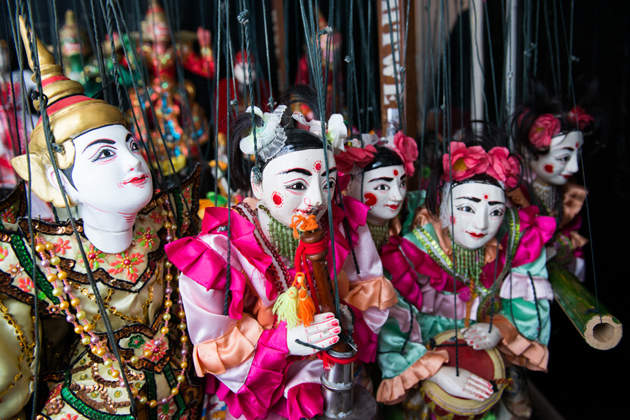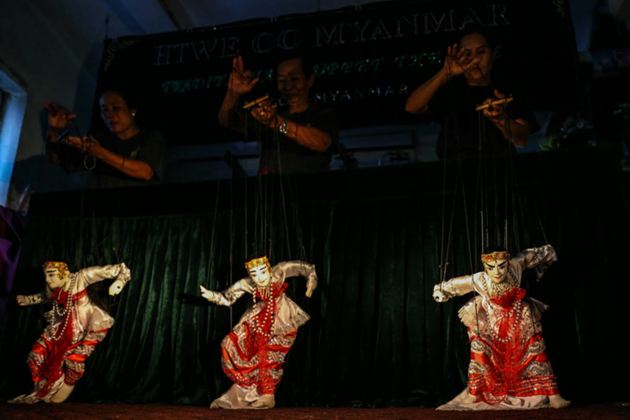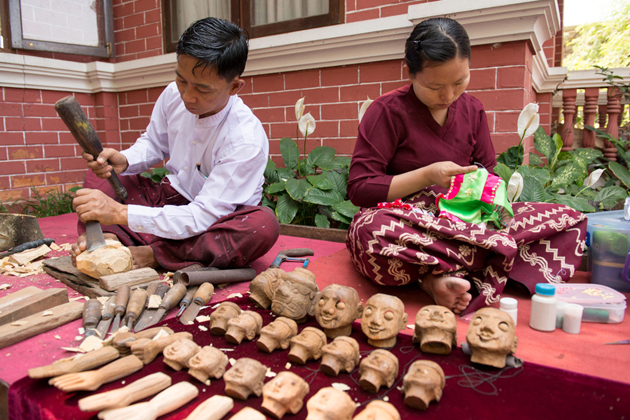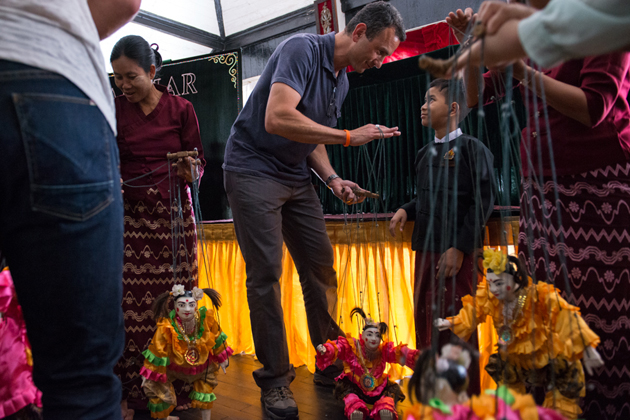Some people believe that the traditional Myanmar puppets have been carried with the culture of this country for thousands of years, perhaps since the 11th century, but this fact still remains unsure today. Mr. Khin Maung Htwe, the owner of the Htwe Oo Myanmar Puppetry Home, stated that "Although I'm sure that it originated from over 600 years of ancient culture; we have discovered that wooden puppets were a major form of entertainment for Burmese royals ever since the 15th century."
The History of Myanmar Puppetry
Legend has it that puppetry first appeared in the 11th century of the Bagan Dynasty. The period between 1820 and 1885 was the time puppetry was most warmly received. The performance techniques reach the peak when actors were able to combine it with dances. However, this type of art did not last long because, in the 1960s, there remained just 5 troupes.

Characteristics of Myanmar Traditional Puppetry
Traditional Burmese puppet shows have 28 main characters, ranging from gods, animals, monsters, and royals. One of the most concerned characters is Nat-ca-do, which performs traditional dances to express respect to God. Burmese puppets are carved from wood, polished before being sanded and painted with various natural areas. Then they are dressed in needle costumes with rings and some other accessories. There is an interesting fact that they even hewed the characters' genitals in detail though they will be covered under sophisticated clothes. Each puppet is usually made from 17 to 19 pieces of wood and moved by 11 strings (the most complicated can be up to 16 ones). Head and shoulders are controlled by 5 strings whereas the arms and legs are controlled by the rest of 6 ones. Burmese people believe that puppets also have spirit. Therefore, when designing and shaping the characters, it is the soul and liveliness that play major parts instead of the outside appearance.

If you have a chance to watch a Burmese puppet show in your Myanmar tour, you will see that almost every scene delivers a message together with the character's personality. The plots may range from ancient myths, the culture or daily events. Singing artists bring the expression to the audience through their vocals by heightening the atmosphere or emphasizing the characters' personality, later contributing to performance success.
The target audiences in the past used to be emperors and royal members in society. Today, however, the shows are mainly enjoyed by foreign tourists and often lasts for just one hour. Unlike most performing arts, there are no language barriers in the shows, thus, this helps not hindering the enjoyment and connection of audience with the puppets, and in turn, this has preserved the art form for centuries. Previously, a single puppeteer was able to control 60 strings at one time; however, this skill has been lost for years. Puppeteers nowadays usually learn to control at least 12 puppet strings.

Notwithstanding the rarity of Burmese puppetry today, there still have figures together with the community that makes attempt to keep the art form alive. Some of them are U Pan Aye, puppeteer working at Mandalay Theater, whose shows are mainly enjoyed by foreign tourists. Another is U Maung Hla in Bagan, the one who has his own stage at home to pass down the art form to grandchildren. The way he describes traditional Burmese puppetry as a performance from the soul really shows that he has the expression of an artist who is full of dedication and reverence for the ancient art form.
Although there exist no more than a dozen independent groups of Burmese puppeteers, puppetry still remains as a unique art form, making Myanmar proud of their rich traditional culture.

Where to Enjoy a Traditional Puppet Show in Myanmar
Once taking a Yangon tour package, don't miss your chance to watch a puppet show in Htwe Oo Myanmar Traditional Puppet Theatre. The traditional puppet show is performed by Htwe and his family who have traveled and performed their shows around the world and won many awards. There is no language barrier in the show cause it always includes English explanations.
Opening Hours: 4:00 pm to 7:00 daily
Phone: +95 9 512 7271
Address: Yama Street, Ahlone Township, Yangon, Myanmar
